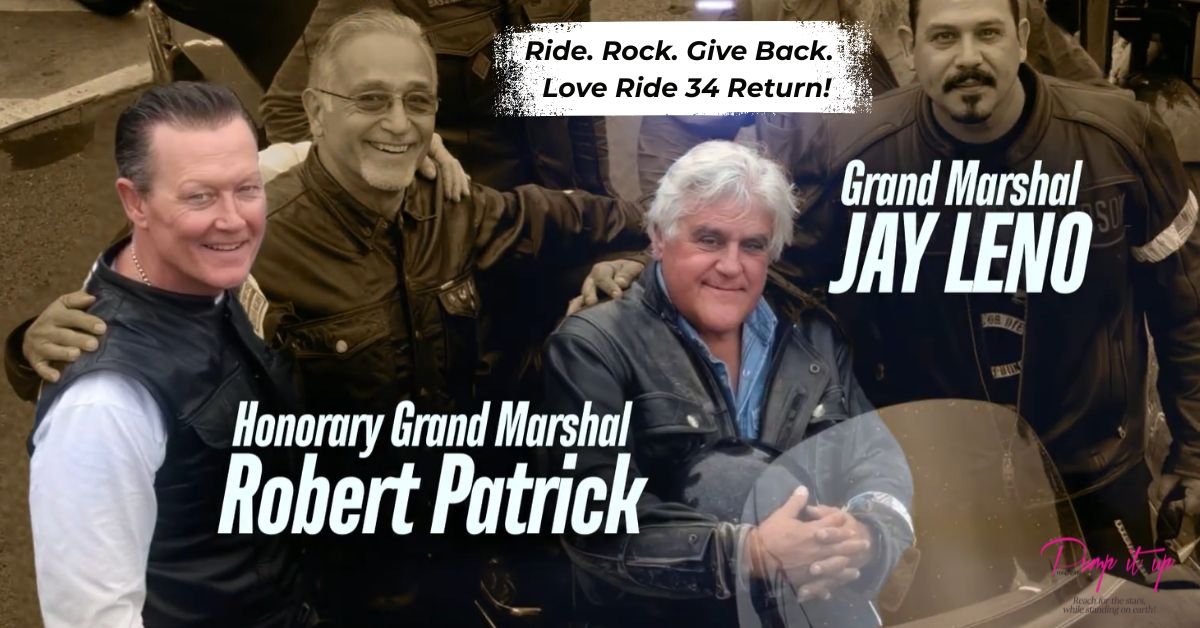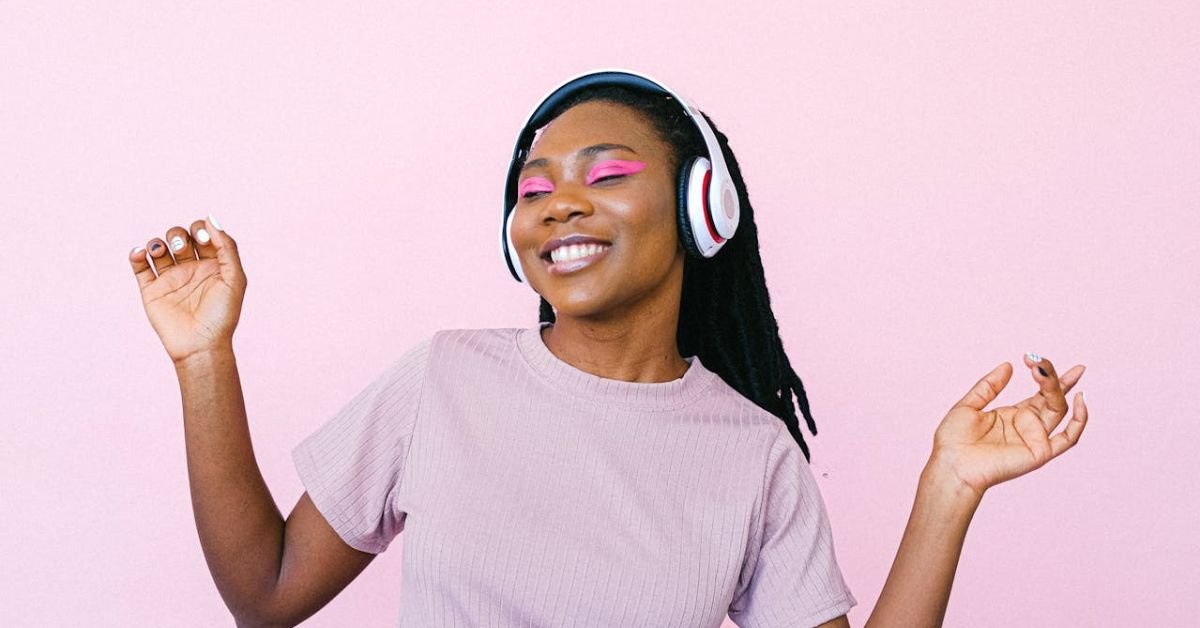
Back in autumn 2019, this journal published a sweeping study of the modern music business, 2020: Where is the Money in Today’s Music World?, detailing all the positive signals of a music boom in formation. Given the doom and gloom most were still feeling after 20 years of decline, it was a jarringly optimistic prediction that not everyone was able to believe. But over the subsequent months, as the new decade rolled in and official figures for 2019 were made public, the picture was getting noticeably brighter. The embattled recordings industry was recovering at an average rate of 8%, its fifth consecutive year of growth. Admittedly, business was still below the highpoint of the CD boom in 1999, but revenues were back to 2004 levels of around $20 billion annually. Not bad at all, in fact very good and getting better. Galloping out in front, the American market was growing at 13% and generating $11 billion annually. Also thriving was music publishing, worth $11.7 billion globally, almost double the $6.5 billion it was earning in 2013. As for the gravity-defying concert industry, it seemed like there was no end in sight. Ticket sales grossed $22 billion in 2019, an all-time high, and were projected to keep growing to $38 billion in 2030.
In all directions, everything was widening, stabilising, regulating, harmonising. With the proliferation of smartphones and streaming services, copyright was taking root in Asia, Latin America and Africa – vast new markets where bootlegging used to be the norm. Even YouTube, the last marauder of the internet revolution, rang in the new decade with an unexpected confession. Its parent company Alphabet (Google’s cutesy new corporate name) finally admitted how much they’ve been creaming off in YouTube ads: $15 billion in 2019. Not only was that double Spotify’s revenues at the time, YouTube is only paying out a measly 7% to copyright owners. But the greediest corporation on Earth is at least getting nervous about its bad image and over-reliance on freemium models. That’s right, via various proxies and premium services, even Google is now trying to squirm in on the subscription market it did so much to undermine.
And that’s more or less how the deliciously sounding 2020s started. For a wonderful, albeit innocent moment, there wasn’t a cloud in the sky. Following two decades of pain and upheaval, the new technology was starting to work for copyright. Needless to say, it was right here that the doorbell rang. Who’d have imagined such an unlikely party pooper? Barbecued bat flu from a town called Wuhan.
We’re still heading into a boom
It’s been a lonely trudge since the first lockdowns of March 2020. But as we turn another corner into 2021, the encouraging news is that, as catastrophic as Covid has been for gigs and festivals, growth is still happening unabated in the area that remains the most vital driver of system health and economic outlook: the recordings industry. 2020 was another bumper year for streaming platforms, and as a result, a surprisingly okay year for labels, given the extreme conditions they’ve had to operate in. In September 2020, an incredible 400 million people were paid up to a subscription for streamed music. That’s almost 100 million more than in 2019. Estimates put today’s music streaming market at over $20 billion. Add physical formats, licensing, publishing, merchandising and other spin offs, and the original prognosis is holding: We’re still heading into a boom. Even with Covid, the creative pumps of an ever-growing music ecosystem are pounding strong. If anything, lockdown is strengthening demand.
You’re probably not feeling it. If live music is your livelihood, you’ve been muddling through your worst year in ages. But there is hope – realistic hope. Something in the marketplace is stirring and it’s stirring big. In May 2020, Goldman Sachs actually upgraded by 25% their previous projections of an imminent music boom. They now believe that the three core sectors (live, recordings and publishing) will double in size to $131 billion by 2030. We’d be wise to take the exactness of these numbers with a pinch of salt, but the upward trends are irreversible. The year even ended with the UK parliament conducting inquiries into the inner workings of the digital music economy. Public anger at tech greed is organising, and it’s now only a matter of time before the same scrutiny is widened to collection societies and publishers.
All these patterns bode well for musicians, songwriters, producers, managers, publicists, promoters and stage crews. What it means in real terms is that, despite venues and festivals being locked down, royalty streams are still rising, audience sizes have continued growing, labels are still releasing new material, and public opinion is consolidating favourably. Given the thousands of artists now chomping at the bit to get back on the road, given the millions of people suffering from chronic cabin fever, we can be confident that once vaccines are rolled out, the world is going to dance and sing on a scale not seen since 1945.
We’ll meet again
Yes, World War II is the glaring precedent. To understand how lockdown might actually be giving the music business a long-term boost, despite being temporarily terrible for musicians and live music, it pays to know that such a situation happened before at exactly the kind of juncture we’re now at. As readers of this journal will know, I’ve written extensively about the first record business crash of the 1920s and 1930s as a result of radio, and its many parallels with what the internet did to the CD industry of the early 2000s. Suffice to say, that for the last twenty years, history has been repeating in eerie echoes. The events of 2020, however unexpected, have added another familiar pattern to the same old cycles.
That first crash, which began in 1922 and hit rock bottom in 1934, almost knocked the mighty gramophone industry into obsolescence. But from the downsized and demoralised wreckage, an even bigger music economy emerged. It was actually from the Great Depression and World War II that most of the innovations we associate with the post-War boom were pioneered: Jukeboxes, electric guitars, top 40 charts, long-player albums, multi-track recording, stereo sound, even the word ‘teenager’. There’d actually been a slight recovery in the late 1930s; five years of modest growth. But with the outbreak of World War II, the music business was thrown back into crisis. Drafting, mobilisations, rationing, nationwide upheaval: Concert venues and orchestras were the most severely affected. Curiously however, the paucity of gigs and new releases did not dampen demand. On the contrary, record sales rocketed. Wartime angst made music more relevant. Music was empowered as both a spiritual medicine and a commodity.
Of course, in terms of deaths, duration and trauma, Covid-19 is a picnic compared to the War, which left countries in ruins and killed over 70 million – roughly 3% of the world population. But here’s the thing: For most people, it was not spent on the frontline. In America and Britain, where the music market was concentrated, there were no land battles. Back then, as now, there was the actual crisis, but behind it, was a less visible social, economic and mental health crisis affecting hundreds of millions not necessarily in physical danger. Back then, as now, the demand was driven by ordinary people stuck at home, struggling with frozen, rationed, restricted lives, unable to socialise, holiday, or even sleep normally.
If you look at all the side effects – separation, depression, alcoholism, school disruption, travel restrictions, closures, debt, hunger, empty streets – there is much to compare between World War II and Covid lockdown. To understand what people were really feeling, consider the biggest smash hit of the whole war, Bing Crosby’s ‘White Christmas’, an air so popular it was listened to all through 1943. You already know its homely opening line, but take a deeper look at its context. More of a prayer in disguise, the killer twist is in its falling sigh, ‘…just like the ones I used to know.’ Forget Christmas, it’s really about hope and the deprivation of normality. Indeed, when the war was won and rebuilding began, most historians agreed that a handful of voices – Bing Crosby, in particular, but also the Andrews Sisters, Vera Lynn, Marlene Dietrich, and others, did more for public morale than any political or religious leaders. It’s why post-War culture was so rooted in music.
World War II reveals many of the contradictions we’re experiencing. Those who lived through two world wars and its turbulent interim were all too conscious that their Victorian elders had enjoyed much easier, more prosperous times. As such, it would have been rude to suggest that the War was an opportunity for a global reset. And yet, that’s what did eventually happen. By getting through a series of major crises, a generation became more unified and resolved to put their children’s futures first. They heard the planetary call to build the new systems we eventually inherited and still owe so much to.
Zooming the moguls
So what’s really happening today? It’s never easy to map history in real time, but there’s one small group of grey-haired elders seeing the key signs from all the best vantage points: the label owners, the major CEOs, the top promoters. Not only have they navigated 40 years of music waves and recessions, they’re the ones working with the truest market data. So, for the last few weeks, I’ve been zooming the moguls, who I found in various states of bearded and bunkered isolation. It’s clearly been a tough year for everyone, even the multi-millionaire commanders of music empires. But just like in World War II, the otherwise messed-up circumstances have revealed a number of positives for music. ‘March, April and May were super scary,’ says Ben Swanson, CEO of the Secretly Group, America’s biggest indie, behind artists as diverse as Angel Olsen, Unknown Mortal Orchestra, Kevin Morby and Bon Iver. ‘We, along with so many other music companies, did a lot of doomsday planning.’
What they soon discovered was that, despite the difficulty in releasing and distributing records, lockdown was intensifying demand. Secondly, any label who’d survived the early-2000s was able to adapt to the strange new normal. Like its peers, Secretly had diversified into digital, vinyl, publishing, distribution and licensing. They also had their own online store or D2C (direct to customer) as it’s called in modern jargon. ‘D2C was the big, unexpected boom,’ says Swanson. ‘We had our biggest D2C months by several multiples, in May, June, July and August.’
8.8 million vinyl records were sold across America in the first six months of 2020. That’s marginally up on the 8.6 million in the same period the previous year. And thanks to the deluxe pricing of vinyl, this niche generated $232 million for American indies in the darkest hours of the pandemic. The second half of 2020 was even better. Record Store Day and Black Friday enjoyed their highest ever vinyl scores, and Christmas saw its best vinyl sales since 1991. In both America and Britain, vinyl marked its seventeenth consecutive year of growth, an extraordinary result given that stores were closed most of the time.
Certain income streams did dry up: As a result of TV and film productions being locked down, it was a dismal year for synchronisation, and growth in licensing music to video games and the wider profit margins of direct mail-order left many indies wondering about city rents and traditional models. ‘I think every company was forced to really look at their business and get smarter, sharper and more efficient,’ says Swanson, whose distribution wing handles 22 other labels. ‘Large shocks to the system like this are good for that at least. I also think Covid and some of the social justice movements have re-prioritised how companies view their place in the world. I actually think this is good for the economy, long term.’
‘Covid has definitely exposed the fundamentals,’ agrees Daniel Miller, CEO of Mute, the imprint behind Depeche Mode, Moby, Erasure, Goldfrapp, and others. ‘On a purely operational level, we found we were able to deal with lockdown quite well. We’ve always been a technological, forward-looking label, able to move around, working remotely. Plus, most of our artists already had their own home studios, which allowed them to continue their creativity. Obviously, lockdown has been hard in other ways. I think it’s fair to say we’ve all been confronted with mental health issues. But even there, I see positives. I do feel we’re communicating more openly as people.’
Nothing to review
Although Mute’s offices are in London, Miller spent the year holed up in his Berlin studio. Like everyone, the obvious question was whether or not to go into semi-hibernation. ‘In the first weeks, I remember Zoe, our PR officer, told us her contacts in the media were complaining about having nothing to review. They were gagging for stuff. So we went ahead with releasing, not really knowing what would happen. I’m happy to say that our artists got more exposure than they probably would have got in normal circumstances. In the UK, we were helped by the Love Record Stores campaign. The community support has been amazing. It turned into a surprisingly good year for vinyl.’
Were the bigger labels delaying releases? ‘Our initial instinct was to delay some releases until artists were able to tour behind them,’ confirms Craig Kallman, Chairman and CEO of Atlantic, the New York label behind artists as diverse as Ray Charles, Aretha Franklin, Led Zeppelin, Bruno Mars and Ed Sheeran. ‘When Covid hit, there was a moment of shock and uncertainty, but when it became obvious that live music was going to be on hold indefinitely, artists needed to keep releasing new music to stay engaged with their fans. We’ve always been an A&R-driven company, and the silver lining to this terrible pandemic was that artists now had a lot of unexpected free time to be creative. So, we all adapted and regrouped. A lot of our artists already had home studios, and we helped others set up new ones. Musicians, songwriters, and producers figured out how to collaborate through Zoom sessions. As always, artists proved that they’re endlessly flexible and resilient.’
Although no major label wanted the disruption, 2020 signified an eclipse. In the difficult early-2000s, they all had to refocus their fortunes on streamed pop, many of them letting go of physical formats. The bet has paid off. America now has an incredible 72 million people paying monthly subscriptions for music, a massive market that’s more than tripled in 5 years and is already generating $10 billion annually. Because this audience is so young, it’s no surprise that Millennial pop is dominating. Take two ends of Atlantic’s catalogue: On Spotify, Led Zeppelin’s most popular songs have been played in the hundreds of millions, whereas Ed Sheeran’s have been played in the billions. For every person who plays ‘Stairway to Heaven’, five play ‘Shape of You’.
But how has lockdown disrupted this dense online marketplace? ‘Fan behaviour and listening patterns shifted,’ explains Kallman. ‘We lost commuter drive-time listening, but we gained in stay-at-home streaming traffic. We lost opportunities for music that would traditionally break out of the club scene and lost exposure in other places where people gather – like retail stores, bars, and restaurants. But we gained from more immersive listening in lockdown, with people creating fantastic playlists and actively exploring both new and catalogue music. And we saw a huge surge in live streaming events. We’ve also found a shift towards more serious, socially relevant songs during this time of uncertainty and unrest.’
The vitality of video
‘Without tours, it’s obviously been harder to keep momentum going on new titles,’ says Martin Mills, CEO of Beggars, the world’s largest nest of indies behind artists such as Thom Yorke, The xx, Arcade Fire, Aldous Harding, and Lankum. ‘We’ve been releasing anyway, and learning to promote differently. What we’ve been doing this year is something we’d been thinking about doing anyway: Send a camera crew out to visit the artist and spend a few days putting together a whole kit of assets – music videos, interviews, and other narrative material. Obviously, with travel restrictions and TV studios unable to receive guests, we’ve had to do things ourselves. But when Covid ends, we’re going to continue working like this. In a world where online media is growing and traditional media is struggling, it makes a lot of sense for record labels to use video far more creatively.’
Video – it’s the word on everyone’s lips. Lockdown has normalised video-calls, raised the status of videos, and given live streaming the boost it needed. ‘Ticketed live streaming is here to stay,’ continues Mills. ‘We already believed in it and invested in a live stream company. Obviously, nobody’s suggesting real-life concerts will be replaced by technology. It’s complementary. But there’s plenty of benefits to watching shows in the comfort of your own home: Price, obviously. Paying a few pounds to see your favourite band play somewhere you’d never be able to get to in person can only be welcomed by fans. For older people too, mothers, job-seekers, anyone really. No tall guy blocking your view, no queues to the toilets, no taxi ranks in the rain. Plus, you’ve got the chat rooms. It’s untrue that live streaming is impersonal. There is a community aspect that ties in with social media. Ticketed live streaming is the future, or should I say, it’s part of the future.’
But do the big concert promoters agree? ‘Live streaming is replacing the DVD which replaced the VHS,’ muses Denis Desmond, CEO of MCD, Ireland’s largest concert promoter. ‘Think of ticketed live streaming as rebuilding the DVD market that got lost with obsolescence and smartphones. So yes, live streaming could be bigger than the DVD in the way DVD was much bigger than VHS. If well marketed and attractively priced, it could be huge, as we saw recently with Dua Lipa. But you have to pitch and price it right. Too quiet, or too high, and you won’t get the numbers.’
Substance before celebrity?
On so many levels, Covid is revealing the ever-shifting relationships between live and recorded music. It’s no secret that for the indie purists who aren’t benefitting nearly as much from streaming and who have to sell deluxe vinyl to the most discerning of customers, there was something inherently unhealthy about the early-2000s. Rising ticket prices and collapsing album sales spawned the age of granddad rockers and never-ending comeback tours. Although market forces shaped this topsy turvy landscape and enabled musicians to survive the CD crash, there was a feeling that the live industry became the spoiled child of the music business family.
‘I’m not afraid to say it,’ says Miller. ‘The power shift away from labels towards managers and agents wasn’t good for music. It used to be that touring supported the record. Then, you had a period where the record promoted the tour. Sometimes the record was just a half-hearted calling card to plug a huge tour. You had managers dictating to labels what to release and when. And I don’t say this as a label boss craving more power. I honestly believe that everything works better for everyone, especially the artist, when new material is the primary focus. Thankfully people are back spending time on new albums. It means we’re gradually moving back to substance before celebrity.’
But is the recordings industry really taking back power, and if so, will the shift in fortunes necessarily result in better music? Take the two biggest companies in both sectors: Universal Music generated $7 billion in 2019, an enormous sum, but less than the whopping $11.5 billion raked in by Live Nation. What these headline-grabbing figures fail to explain are the far heavier costs and risks being carried by concert promoters who, unlike record companies, have to pay venues, crews, artists, policing and various other production expenses, without any certainty of selling enough tickets to break even. ‘I think the majors crept back on top a year or two ago,’ confirms Desmond, now a partner with Live Nation. ‘If you look at Universal’s profits, they’re just phenomenal. They used to be paid per album, now they’re getting paid every month for the same music. Their risks are virtually nil. At best, they’re paying artists only 30%, in most cases, less. And as streaming keeps growing, the profits are getting crazier. We don’t have models like that in the live industry. We still sell tickets. The joke is, the majors were initially against streaming. They were dragged screaming into this dream situation. That’s all history now, but going forward, record labels should be sharing a lot more of all that money with artists. Let’s see what they now do with all this power.’
He’s right. Fierce royalty battles will characterise the 2020s. Even still, it’s nonetheless a blessing that labels are back investing billions in artists and repertoire. ‘More A&R is definitely good news for us,’ agrees Desmond. ‘Just like more gigs and festivals is good news for them. We work hand in hand. They help us and we help them. The thing to understand, however, is how much bigger and more complex the concert market has become. There’ll always be demand for legacy artists, and by legacy I mean an established act that has four to six albums fans know by heart. Gigs used to be an almost exclusively young person’s market. It’s not the case anymore. Our audiences now range from children to 70-year-olds. There’s just lots more people going out to shows. And lots more arenas to house everybody. So you have this diversity that’s going to continue for the foreseeable future.’
As strange as it may sound in the depths of lockdown: the live industry is still heading for at least a decade of bionic growth. Just look at arena building in bustling new music markets like South Korea, China, India, Mexico, South Africa, and Brazil. What we also forget are the many positives of higher ticket prices. Scaling, the term for pricing seats at different rates, has cut out touting and enabled promoters to pay artists and crews professional fees.
So, where’s the bad news? Objectively, there hasn’t been much in the way of permanent long-term damage. One of the few noticeable craters left by Covid-19 is the CD. Although 10 million CDs sold in America in the first 6 months of 2020, the format has so far endured a 45% collapse on last year’s figures. Another case study is Japan, the world’s last CD hold-out. Japanese people bought a resilient 100 million CDs in 2019, but falling prices and unit sales have been weakening their music economy for two decades. We’ll have to wait until May for the full stats, but for Japan’s eighty Tower megastores, 2020 was catastrophic. Yes, even Japan now accepts that its CD loyalty is a problem.
Everywhere, it’s the same story. Covid-19 has been speeding up the inevitable. Models and formats already struggling are now on their knees, almost begging to be put out of their misery. Meanwhile, those who’ve dared to embrace the habits and gadgets of the new century are rising with the tide. Considering the near-death turmoil that independents experienced all through the early-2000s, one can understand the bewildered optimism of the record moguls. ‘2020 was a largely positive year of re-pivoting and reinventing,’ concludes Mills, audibly shocked and puzzled by his own words. ‘The weird bit is that although we’re stuck at home, we’re getting to the future faster. Covid has provoked a kind of cull.’
The big unknown is how much the slow grind of mass unemployment and national debt will damage the wider economy. ‘I wouldn’t like to be in retail,’ gulps Desmond. ‘But I don’t think a recession will hurt music. According to surveys, one of the things people miss most is going out to see live music. The historical evidence is there as well. After World War I and the Spanish flu, the 1920s were a boom time for clubs and shows. We’re already seeing the signs. When we put off Electric Picnic, we gave ticket holders the choice of being reimbursed or keeping them for 2021. 93% decided to keep their tickets. That shows how much we’re in a different category to regular goods and services. It’s the big positive. But we need to get vaccines rolling out and shows back open. We can’t take a second year of lockdown.’
‘The fundamentals of our industry remain strong,’ concurs Kallman. ‘We are one of the industries that are thankfully thriving during the pandemic, proving just how essential music is to people’s lives. It has accelerated the pace of change and our drive into new revenue streams like social media, gaming and fitness. Now that vaccines are here, there’s a huge, palpable sense of anticipation and hope. People are already calling the coming years “the new Roaring ‘20s’”. When live entertainment returns, all that bottled-up energy will explode; it will be a great time for artists and fans alike. So much fantastic new music has been eagerly welcomed during the pandemic, and there’s also a lot of amazing music just waiting to come out when artists can hit the road again. We’re very optimistic about 2021 and beyond.’
Your writing and recordings define you
There’s no doubt the parties will be epic. Alas, the logistics of this final stretch remain tricky. Not only will entire populations have to be vaccinated, for the concert industry, a second summer of lockdowns could set off a destructive domino effect of ticket reimbursements, tour cancellations, lay-offs and venue closures. As things stand, summer hangs precariously in the balance.
Come what may, we’d be wise to make good use of this silence. ‘I think it’s true for most creative people,’ says Miller, ‘Having to accept every gig offer can really lead you astray. I’m thinking of gifted producers who have to deejay for financial reasons, but I know the same realities and temptations have been affecting most musicians for at least a decade. The treadmill of having to play gigs all the time can become very deadening. Ultimately, it’s your writing and your recordings that will define you. So, yeah, I know it’s been hard, and I really think of my friends in the clubs and live industry who’ve been hit hardest. I’m aware it’s been easier for people like me who’ve a studio, or a label. But it’s still true and it needs to be said: For our own sakes, and for music generally, we all need to look at lockdown as a sabbatical year. If you can write, record or produce, now is a chance to get better at what you do best. Collectively also. If this period of isolation serves any purpose, and I believe it can, it’s to remind us as a community what we should be doing better.’
There’s something resonant about the typically reserved, understating Miller speaking out like this. In 1938, thirteen years before he was born, his actor parents had to flee Vienna with nothing but the suitcases they could carry. The lucky, London-born child of that dark chapter, he’s now the old man, the exile, looking out at the deserted streets of Berlin, feeling the extraordinary cycles that marked his own fortunes and those of his generation. Whatever is happening right now, it’s so big, you can almost hear its wheels turning. It’s the same creaking sound that prompted Bob Dylan to sell off his song catalogue, so that his heirs can step lighter and freer into their own individual futures.
This strange new century is calling us to look ahead and stop picking over the past. We all sensed a moment like this might happen. Maybe not a pandemic, but some kind of major event that would force us to change our ways and reorganise anew. Is this not it? What if this endurance test we’re all being put through is just Mother Nature’s way of getting us focused for a much bigger decade in which music will be at the heart of human thinking? And isn’t it happening as it always does, the darkest hour right before the dawn?
Published on 7 January 2021
Gareth Murphy is author of Cowboys and Indies – The Epic History of the Record Industry. For his music business articles in the UK press, he won Writer of the Year at the 2017 PPA Independent Publisher Awards. He ghostwrote Siren Song, Sire Records founder Seymour Stein’s official autobiography, and lives in Paris.







